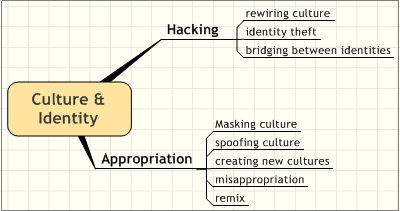 Alan Levine has a great new video shared via the Flat Classroom Project that took me back to some thinking I did with some pals at the University of Reading’s OdinLab (UK) in 2010. We were pondering how to talk about identity, particularly in the internet era. The OdinLab folks had a project for university students called “This is Me” and I did a remix for Librarians as part of some work I was doing in the US.
Alan Levine has a great new video shared via the Flat Classroom Project that took me back to some thinking I did with some pals at the University of Reading’s OdinLab (UK) in 2010. We were pondering how to talk about identity, particularly in the internet era. The OdinLab folks had a project for university students called “This is Me” and I did a remix for Librarians as part of some work I was doing in the US.
I loved that Alan presented his ideas about identity through three “slices” of his public self, and that Alan himself is generous about all sides of his life. (Makes for good friends!) I chuckled at the mention of staying in the homes of people he had met “only” online… my husband has been chuckling at me for this since 1996, inviting in what he called, even way back then, my “imaginary friends.” But we all know, you aren’t imaginary! 😉
Take a look at this 13+ minute video. Alan asks some questions that are worth our time. I particularly like the bit at the end when he asks not just about our individual identity, but the “we” — our collective representation and identity online. Cool!

 .
.